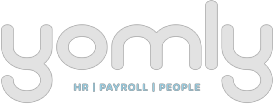Common Payroll Errors And How To Avoid Them
Navigating the intricacies of payroll management presents a substantial challenge for many organisations. Common payroll errors often result in significant financial discrepancies, undermining employee trust and potentially leading to legal complications. These mistakes range from simple computational errors to more complex issues related to tax withholdings and benefits administration. Given the complexity of payroll legislation, staying updated with the latest regulations is paramount for HR professionals. This article delves into the frequent pitfalls encountered in payroll processing and outlines effective strategies to mitigate these issues.

Identifying Frequent Payroll Mistakes
Common payroll errors often revolve around a core set of issues that can significantly impact an organisation’s operations:
- Mislogged employee hours leading to incorrect wage payments.
- Misclassification of workers, blurring the lines between independent contractors and full-time employees.
- Neglecting to update the system with the latest tax rates and employee benefits changes.
- Inaccuracies in calculating overtime or holiday pay, diminishing employee morale.
- Delays in processing payroll, potentially violating employment agreements.
These errors underscore the complexities involved in payroll management and highlight the need for meticulous oversight.
How To Mitigate These Errors
Addressing payroll inaccuracies effectively requires a strategic blend of HR systems and payroll software. This combination not only harnesses the distinct strengths of both tools but also creates a synergistic solution that targets payroll complexities at their core. Such an integrated approach directly aligns with the subsequent strategies – enhancing accuracy, ensuring efficiency and fostering compliance – outlined to prevent common payroll mishaps.
- Leverage HR Systems for Accuracy: Modern HR systems automate essential aspects of the payroll process, including time tracking and employee classification. This automation ensures that data used for payroll is accurate from the start, reducing the chance of errors related to manual data entry or oversight.
- Implement Payroll Software for Efficiency: Dedicated payroll software streamlines the payroll process further by automating tax calculations, generating payslips and managing direct deposits. This not only ensures accuracy but also helps in maintaining compliance with local and federal laws, thanks to regularly updated tax tables and regulation changes.
- Regular Audits and Updates: Conduct periodic audits of your payroll processes to identify and rectify discrepancies. Ensure that your HR and payroll systems are always updated to the latest versions, incorporating new features and compliance measures.
- Training and Communication: Educate your HR team on the nuances of the payroll software and HR systems. Encourage open communication channels with employees for them to report any discrepancies in their pay or hours worked promptly.
Streamlining Payroll Management for Better Outcomes
By integrating HR automation systems and payroll software, businesses can significantly reduce the incidence of payroll errors. These technologies not only streamline the payroll process but also offer scalability and flexibility to adapt to changing business needs and regulatory environments. For organisations seeking to enhance their payroll operations, Yomly stands ready with advanced, user-friendly solutions that address these challenges head-on. Our commitment to providing comprehensive HR and payroll solutions helps businesses avoid common payroll errors, ensuring a smooth and efficient payroll process that benefits both the organisation and its employees.
Book a product tour of our software today!
Can an employer recover overpaid wages?
- Yes, an employer can recover overpaid wages, but this process must be handled with care and in accordance with the legal framework. The first step involves notifying the employee of the overpayment and discussing repayment options. It is essential to document this process and agree on a repayment plan that does not impose undue financial burden on the employee.
How is payroll calculated?
- Payroll calculation involves determining an employee’s gross pay, then deducting applicable taxes and contributions to arrive at the net pay. This process includes accounting for hours worked, overtime, bonuses and any deductions such as pension contributions and health insurance. The specific tax rates and contribution percentages must align with the current regulations.
What is the easiest payroll software to use?
- The easiest payroll software to use typically offers a user-friendly interface, comprehensive support, and integration capabilities with other HR systems. It automates calculations, tax filings, and payments, making the payroll process more efficient. Yomly is an example of such software, designed to meet these criteria while catering specifically to the needs of users requiring minimal manual intervention.
